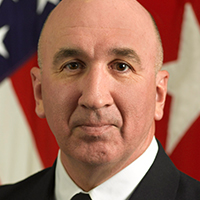Saving for Retirement: 5 Steps to Building Significant Wealth
Saving for Retirement: 5 Steps to Building Significant Wealth
Are you saving enough money for retirement? Do you know how much money you need to accumulate in order to retire? Are you concerned about how you should be saving for retirement? The simplicity of these questions can lead many people to believe that there is a simplistic answer. Unfortunately, nothing can be further from the truth. As you will see in the following five-steps, excerpted from my book Securing a Retirement Income for Life: Strategies for Managing, Protecting and Preserving Your Wealth, the process of building your retirement portfolio is analogous to building a business or professional practice. How would you build a multimillion dollar business? By planning, setting goals, watching your expenses, educating yourself and by working hard knowing that all your efforts, discipline and your commitment will payoff in the long run. Building a multimillion dollar investment portfolio requires the same discipline and commitment. Building significant wealth is not a get rich quick scheme. The reality of successful investing for retirement is that it is a complicated and time-consuming process. It takes plenty of time and patience to become financially independent with the tenacity to overcome all obstacles. The sooner you start, the sooner you will be prepared to retire. Putting it off just increases the amount of money you will need to save each year. In addition to procrastination, many people accumulate a lot of debt attempting to satisfy their desire for immediate gratification. Spending money on an extravagant lifestyle today can make it exceedingly difficult to set enough money aside for retirement impacting their lifestyle in the future. Decisions about how to manage their company retirement plan, how much to contribute, how to invest their money and what to do with their vested balance after they retire also adds to the confusion causing many people to put off planning. It is important to understand how these obstacles can prevent you from saving for retirement. By planning today, you can create your own vision of your retirement and what you need to do now to make your dreams a reality.If you are committed to reaching your goal of financial independence, here are the steps used by investment professionals to determine the amount of money needed to provide a retirement income for life.
Third, determine the amount of money needed to provide enough retirement income for the rest of your life. Many people depend on a fixed income stream during retirement. In an inflationary environment, a fixed income stream will not allow you to maintain a constant standard of living. A more acceptable means is to have your income increase annually with inflation. From your retirement income goal, you can determine the estimated target portfolio needed to provide an inflation-adjusted income stream for the length of your retirement life. For example, to receive an income of $150,000 per year increasing at the rate of 3% each year for thirty-five years, you would need an estimated target portfolio of over $2,620,000 earning an average annual after-tax return of 8%.
Fourth, develop an investment strategy designed to meet your goals. How you manage your retirement funds using a diversified asset allocation strategy is one of the most important factors that will help you accumulate the dollar amount required to achieve your retirement income goal. Once you determine how much you need to accumulate, determine how much you should be saving for retirement. For example, to receive an income of $150,000 per year increasing at the rate of 3% each year for thirty-five years, you would need an estimated target portfolio of over $2,620,000 earning an average annual after-tax return of 8%. A 40 year old planning to retire at the age of 65 would need to invest over $35,800 each year for 25 years to accumulate that amount of money. A 48 year old planning to retire at the same age would need to invest over $77,600 each year for 17 years to accumulate the same amount of money.
Fifth, protect yourself from the potential risk of outliving your money. When people retire, they want their retirement funds to last for the rest of their life. Uncertain knowledge of investment returns, length of life in retirement, and rising expenditures make assumptions about the future less reliable. Longer life expectancies increase the potential risk of outliving your money. An extended market decline soon after retirement could jeopardize the sustainability of withdrawals over the life of the retirement period. Meeting financial obligations through an investment-based approach is only one part of the process. Combining a diversified allocation strategy with a guaranteed income stream increases the probability that your retirement funds will last as long as you do.
One of the best things you can do is to start early and stay committed to becoming financially independent. Meeting with a retirement income specialist to plan your retirement needs and objectives and to discuss ways to protect against longevity and an extended market decline will put you in the best possible position to achieve your goals and dreams.
Bill Griffith, Jr., CFP is a retirement income specialist – with expertise in the area of retirement plan distribution strategies, healthcare and long-term care issues. He has practical experience in planning and/or supervising all aspects of a client’s financial planning needs with the goal of protecting and enhancing retirement assets and estates.
—————————————————————————————————————————————————————————————————————
We hope you found this article about “Saving for Retirement: 5 Steps to Building Significant Wealth” helpful. If you have questions or need expert tax or family office advice that’s refreshingly objective (we never sell investments), please contact us or visit our Family office page or our website at www.GROCO.com. Unfortunately, we no longer give advice to other tax professionals gratis.
To receive our free newsletter, contact us here.
Subscribe our YouTube Channel for more updates.

Alan Olsen, is the Host of the American Dreams Show and the Managing Partner of GROCO.com. GROCO is a premier family office and tax advisory firm located in the San Francisco Bay area serving clients all over the world.
Alan L. Olsen, CPA, Wikipedia Bio

GROCO.com is a proud sponsor of The American Dreams Show.

The American Dreams show was the brainchild of Alan Olsen, CPA, MBA. It was originally created to fill a specific need; often inexperienced entrepreneurs lacked basic information about raising capital and how to successfully start a business.
Alan sincerely wanted to respond to the many requests from aspiring entrepreneurs asking for the information and introductions they needed. But he had to find a way to help in which his venture capital clients and friends would not mind.
The American Dreams show became the solution, first as a radio show and now with YouTube videos as well. Always respectful of interview guest’s time, he’s able to give access to individuals information and inspiration previously inaccessible to the first-time entrepreneurs who need it most.
They can listen to venture capitalists and successful business people explain first-hand, how they got to where they are, how to start a company, how to overcome challenges, how they see the future evolving, opportunities, work-life balance and so much more..
American Dreams discusses many topics from some of the world’s most successful individuals about their secrets to life’s success. Topics from guest have included:
Creating purpose in life / Building a foundation for their life / Solving problems / Finding fulfillment through philanthropy and service / Becoming self-reliant / Enhancing effective leadership / Balancing family and work…

MyPaths.com (Also sponsored by GROCO) provides free access to content and world-class entrepreneurs, influencers and thought leaders’ personal success stories. To help you find your path in life to true, sustainable success & happiness. It’s mission statement:
In an increasingly complex and difficult world, we hope to help you find your personal path in life and build a strong foundation by learning how others found success and happiness. True and sustainable success and happiness are different for each one of us but possible, often despite significant challenges.
Our mission at MyPaths.com is to provide resources and firsthand accounts of how others found their paths in life, so you can do the same.
Mastering Business Growth with Howard Shore
Howard Shore, Founder and CEO of Activate Group Inc. discusses managing, even mastering, business growth and the challenges growing quickly can present on Alan Olsen‘s American Dreams Show. Transcript: Alan Olsen Welcome to American Dreams. My guest today is Howard Shore. Howard, welcome to today’s show. Howard Shore Alan, thank you for having me. Alan…
Prosperity and Self-Reliance Zealot Steve Alder
From North America to Ghana, Africa, Steve Alder, President of Ensign Global College (www.ensign.edu.gh), sits down to discuss how a professor helps to build global prosperity and self-reliance on Alan Olsen‘s American Dreams Show. Transcript: Alan Olsen Welcome to American Dreams I’m visiting here today with Steve Alder. Steve, welcome to today’s program. Steve Alder Thank…
Steve Young on Building an Epic Family Legacy
Retired 49r Steve Young Discusses Building a Family Legacy at the Legacy Builders Event on May 15, 2024 As GROCO celebrates three decades of excellence in family office tax and advisory services, we have developed the Legacy Builders to stands as a testament to the firm’s enduring vision: to transform wealth into a powerful tool…




